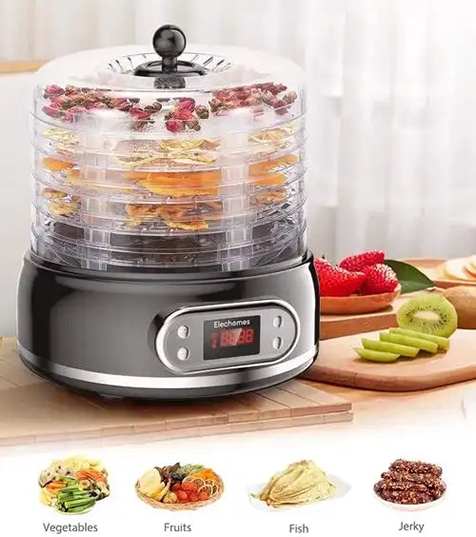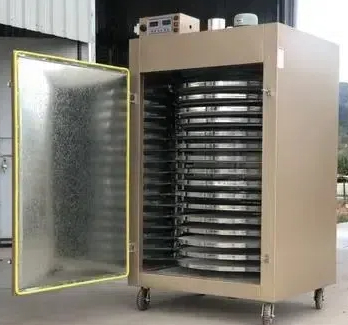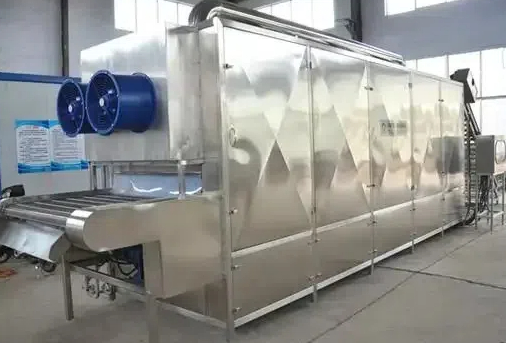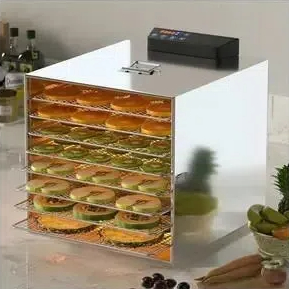
Content Menu
● Understanding Heat Pump Dryers
● Common Issues with Heat Pump Dryers
● Troubleshooting Your Heat Pump Dryer
● Benefits of Using a Food Drying Machine
● How Does a Food Dehydrator Work?
● The Importance of Proper Maintenance
● Energy Efficiency of Heat Pump Dryers
● Comparing Heat Pump Dryers with Traditional Dryers
● Common Misconceptions About Heat Pump Dryers
● Conclusion
● FAQ
>> 1. What should I do if my heat pump dryer is not drying clothes properly?
>> 2. How often should I clean my dryer's condenser?
>> 3. Can I use my heat pump dryer in a cold room?
>> 4. What types of foods can I dehydrate using a food dehydrator?
>> 5. How long does it take to dehydrate food?
Heat pump dryers are popular for their energy efficiency and ability to dry clothes without the need for external venting. However, users often encounter issues where their heat pump dryer is not collecting water as expected. This article will explore the working principles of food drying machines, specifically heat pump dryers, and address common problems, including why your dryer might not be collecting water.

Understanding Heat Pump Dryers
Heat pump dryers operate using a closed-loop system that extracts moisture from clothes and condenses it into water, which is then collected in a tank or drained away. Here's how they work:
- Heat Exchange: The dryer uses a refrigerant that absorbs heat from the air inside the drum. This heat is then transferred to the clothes, evaporating the moisture.
- Condensation: The moist air is passed through a condenser where it cools down, causing the moisture to condense into water. This water is either collected in a tank or drained away.
- Air Circulation: A fan circulates the warm air throughout the drum, ensuring even drying of all items.
This efficient process allows heat pump dryers to use significantly less energy compared to traditional vented dryers.
Common Issues with Heat Pump Dryers
While heat pump dryers are generally reliable, several issues can prevent them from functioning optimally. Below are some common problems associated with these machines:
- Clogged Filters: Lint filters must be cleaned after every use. A clogged filter restricts airflow, leading to inefficient drying and reduced water collection.
- Dirty Condenser: The condenser unit can become clogged with lint and debris. Regular cleaning is essential to maintain airflow and efficiency.
- Faulty Moisture Sensors: If the moisture sensors fail, the dryer may not detect when clothes are dry, resulting in extended drying times and minimal water collection.
- Improper Loading: Overloading the dryer can prevent proper airflow, leading to inadequate drying and less moisture being extracted.
- Ambient Temperature: Heat pump dryers may struggle in extremely cold environments, affecting their ability to extract moisture effectively.
Troubleshooting Your Heat Pump Dryer
If your heat pump dryer is not collecting water, consider these troubleshooting steps:
1. Check the Lint Filter: Ensure that the lint filter is clean and free from blockages.
2. Inspect the Condenser: Remove and clean the condenser unit according to your manufacturer's instructions.
3. Examine Moisture Sensors: Test if the moisture sensors are functioning properly. If they are dirty or malfunctioning, they may need cleaning or replacement.
4. Adjust Load Size: Make sure you are not overloading the dryer. Reduce the load size to allow for better airflow.
5. Monitor Ambient Conditions: If you're using the dryer in a cold environment, consider relocating it to a warmer area or adjusting your drying settings.
Benefits of Using a Food Drying Machine
Food dehydrators and heat pump dryers share similar principles of moisture extraction but serve different purposes. Here are some benefits of using food drying machines:
- Nutrient Preservation: Dehydrating food retains most vitamins and minerals compared to other preservation methods like canning or freezing.
- Extended Shelf Life: Dried foods can last for months or even years when stored properly, making them ideal for long-term storage.
- Cost-Effective: Buying seasonal produce in bulk and dehydrating it can save money compared to purchasing processed foods later.
- Healthy Snacking Options: Dehydrated fruits and vegetables make nutritious snacks that are free from preservatives and added sugars.
- Versatility: Food dehydrators can be used for various foods including fruits, vegetables, meats (like jerky), herbs, and even pet treats.

How Does a Food Dehydrator Work?
A food dehydrator works by removing moisture from food through a combination of heat and airflow:
1. Heating Element: Raises the temperature inside the unit to draw out moisture.
2. Fan Circulation: Ensures even distribution of hot air around food items.
3. Trays for Airflow: Food is placed on trays that allow air to circulate freely, promoting uniform drying.
4. Temperature Control: Most dehydrators have adjustable temperature settings tailored for different types of food.
The Importance of Proper Maintenance
Proper maintenance of your heat pump dryer is crucial for its longevity and performance. Here are some maintenance tips:
- Regular Cleaning Schedule: Establish a routine cleaning schedule for lint filters, condensers, and vents to ensure optimal airflow and efficiency.
- Check Seals and Gaskets: Inspect door seals and gaskets regularly for wear or damage. A good seal prevents warm air from escaping and improves drying efficiency.
- Professional Servicing: Consider having your dryer professionally serviced annually to check for any underlying issues that may not be apparent during regular use.
Energy Efficiency of Heat Pump Dryers
One of the standout features of heat pump dryers is their energy efficiency compared to traditional dryers. Here's why they are more eco-friendly:
- Lower Energy Consumption: Heat pump dryers use significantly less energy by recycling hot air instead of generating new heat continuously.
- Reduced Carbon Footprint: By consuming less electricity, these dryers contribute to lower greenhouse gas emissions when used over time.
- Energy Star Ratings: Many models come with Energy Star ratings, indicating they meet strict energy efficiency guidelines set by regulatory bodies.
Comparing Heat Pump Dryers with Traditional Dryers
When considering which type of dryer to purchase, it's essential to compare heat pump dryers with traditional vented dryers:
| Feature | Heat Pump Dryer | Traditional Vented Dryer |
| Energy Efficiency | High (uses less electricity) | Moderate (higher energy use) |
| Installation | Requires no external venting | Needs external venting |
| Drying Time | Longer drying cycles | Faster drying cycles |
| Moisture Collection | Collects water | Vents moist air outside |
| Cost | Higher initial cost | Lower initial cost |
Common Misconceptions About Heat Pump Dryers
Despite their benefits, there are several misconceptions about heat pump dryers that can deter potential buyers:
- Misconception 1: They take too long to dry clothes.
- Reality: While they may have longer cycles than traditional dryers, they often provide better fabric care and energy savings over time.
- Misconception 2: They are too expensive.
- Reality: Although initial costs may be higher, energy savings can lead to lower operating costs in the long run.
- Misconception 3: They only work well in warm climates.
- Reality: Modern heat pump dryers are designed to function efficiently in various temperatures, although performance may vary slightly in extreme cold conditions.
Conclusion
In conclusion, if your heat pump dryer is not collecting water as expected, it may be due to clogged filters, dirty condensers, faulty sensors, improper loading, or ambient temperature issues. Regular maintenance and proper usage can ensure optimal performance of your appliance.
Additionally, understanding how food dehydrators work can enhance your knowledge about moisture extraction processes in various appliances designed for food preservation. With their energy efficiency and versatility in both clothing drying and food preservation applications, heat pump dryers represent an excellent investment for eco-conscious consumers seeking effective solutions for their drying needs.

FAQ
1. What should I do if my heat pump dryer is not drying clothes properly?
Make sure to clean the lint filter and condenser regularly, check for any blockages in the ventilation system, and avoid overloading the dryer.
2. How often should I clean my dryer's condenser?
It's recommended to clean the condenser every few months or more frequently if you notice reduced performance or increased drying times.
3. Can I use my heat pump dryer in a cold room?
While heat pump dryers can operate in cooler temperatures, extremely low ambient conditions may affect their efficiency. It's best used in environments above 5°C (41°F).
4. What types of foods can I dehydrate using a food dehydrator?
You can dehydrate fruits (like apples and bananas), vegetables (like carrots and peppers), meats (like beef jerky), herbs (like basil), and even make fruit leathers.
5. How long does it take to dehydrate food?
The time required varies depending on the type of food and its thickness but typically ranges from a few hours to several days.












